Enab Baladi’s Investigations Team
One autumn night, more than 250 kilometers away from her parents’ home, Catherine Mizher wore her white wedding dress.
Strange women helped her get prepared.
There, she stood alone without a mother, a sister or a friend to share the moment with.
There, she stood alone without a father to hold her hand to her future home.
In Sweida, in southwestern Syria, Catherine’s family lived their worst moments after they were implicated in killing three young men, affiliated to a security department in the city. The family said that these men participated in “kidnapping and killing” Catherine, and then they “traded with her organs”.
The story of Catherine, 17 years old, began when she left her parents’ house in the city of Sweida at the end of September 2017.
Helped by members of the military security forces, she headed to Damascus, and then to Homs’ countryside, where the young man she loved is based.
Catherine totally overlooked the sectarian difference between herself and the man she loved. However, the case soon went burning with its conversion to a crime of kidnapping and killing, then a security issue, then a political one.
While the media reported different stories of the event, there was an obvious scenario; she eloped.
Catherine herself, through a number of videos published on social media, confirmed that the situation erupted because of her Druze family objection to her marriage of an Alawi man. Similar to a number of young women in her sect, Catherine was forced to “elope,” a thing which always ended up with bloodshed.
The Druze denomination is one of the Syrian society’s most conservative components for internal cohesion is above all. Inter-sect marriage, within such a cohesion, is strictly refused. Nevertheless, the situation is not easy for other religious components in Syria for marriage between different sects is also faced with firm constraints and rejection.
Ms. Suha A, a woman in her fifties based in Aleppo, has a positive view of interfaith marriage. She is a Sunni Muslim who had married a Christian man about 30 years ago and had two children. Though her husband was forced to announce his conversion to Islam, without a commitment to its teachings, just to have a legal marriage, they managed to transcend their families’ refusal, which in time turned into a “reluctant acceptance,” then comfort and finally a total consent.
Suha views the eighties of the last century as “intermarriage’s golden age” considering the “liberty” and the “openness” which featured the Syrian society back then. She stressed that the tendency towards religious commitment in the following period affected the possibility of interfaith and inter-sect marriages’ prevalence. Still, marriage between people from different sects is a widespread phenomenon in Syria, which appears when a helpful social environment exists and without which it becomes secretive.
Perhaps the most salient evidence of this is the period which followed the Syrian revolution for it was characterized by a tendency towards freedom of choice among some young men and women, reinforced by massive waves of migration to Europe, where families lost the possibility to restrict their youths and blood could not be shed.
Laila F, a Druze 26 years old young woman based in Damascus, stresses the fact that a large percentage of her sect’s young men and women who left Syria became more free and open about decisions concerning inter-sect marriages. They enjoy the freedom that she can never have in Damascus.
In an interview with Enab Baladi, Lila points out that her fear for her family of their social surrounding means limiting her marriage choices to the members of her sect. She stressed that, in the future, her children would not have to face the same challenges and that she will attempt to give them a total freedom of choice.
The war did not inspire many changes in Sweida governorate at the level of security or society. The war changed the attributes of other areas for the things allowed in Homs became prohibited in Idlib and the things welcomed in al-Hasakah were frowned at in rural Damascus. These changes include demographic features, social habits and degree of adherence to a certain creed.
Idlib governorate which embraced 3,000 Christians according to a report issued by the “Near East and North Africa Center for Environment and Development” in 2012, today is a home for Sunni Muslims only, a thing which terminated the possibility of interfaith marriage even if the religious rulings made it possible.
As for Homs city, which contains a sectarian mix of Sunnis, Shiites, Alawites and Christians, lately has witnessed a rise in the ratios of inter-sect marriages with the increasing number of displaced people there and the retreat of social restrictions related to family, the neighborhood and relatives.
It is not a surprise that interfaith and inter-sect marriages are affected by war and its ability to touch every aspect of life in Syria. Moreover, the years of confusion, which the country is witnessing, might hold many changes in relation to marriage regulations. However, society intends to be stubborn and shows the intention to resist additional changes, especially with the social gap growing larger between Syrian people.
In the Syrian Regime and Opposition-held Areas, as well as in Countries of Asylum,
What Happened to Interfaith Marriage?
Interfaith and inter-sect marriages are not among the past seven years’ outcomes. Seven years which have witnessed critical changes that affected the very core of the Syrian society, including marriage traditions and conditions which flexibly responded to the war’s variables.
For decades, the Syrian “conservative” society faced a number of inter-sect marriages with refusal, the source of which was not a religion but traditions, customs and the common practices among Syrian families.
So, what happened to intermarriage in Syria in 2011? What are the variables which affected it with religious and sectarian affiliations coming to the surface in the Syrian society?
Displacement Breaks the Habits of the “Conservative” Society
In the past a few years, military control and political conflicts were not the only points of difference and dispute between the Syrian regime and the opposition factions. The dispute had a deep impact on the life of civilians, their customs and traditions; it also produced differences which characterized their social life with patterns domineered by the de facto authority.
Thus, the displacement of more than 5 million Syrians, who belong to different sects and religious denominations, to the areas of the Syrian regime played a role in enhancing interfaith and inter-sect marriages due to interaction which imposed itself on these areas.
In the absence of official statistics on the rates of “intermarriages” which Syria has witnessed in the past few years, the testimonies of people who have experienced such cases have had the most prominent role in proving that they exist. However, such marriages remain “undeclared,” and may do not exceed the limits of the ordinary.
The interaction between Syrian refugees and host societies has played a role in diminishing people’s attachment to traditions and customs, especially those relating to marriage. Such interaction urged the society to accept marriages between people from different regions, countries, religions and sects.
Judge Ibrahim Hussein, a member of the Independent Syrian Judicial Council, said that the law has nothing to do with enhancing the prevalence of interfaith marriages since it did not issue any legislative amendment to the Syrian personal status law, neither in the regions under the regime nor in the opposition-held areas.
Nevertheless, the interaction between Syrian people, belonging to different sectarian denominations, in the regions under the Syrian regime helped enhance marriage between them, according to the judge.
In his interview with Enab Baladi, he added that “Many Sunni people were displaced to Lattakia and Tartous governorates, which have an Alawite majority, and many people of the Sunni Daraa governorate were displaced to Sweida governorate, which is the largest incubator for the Druze denomination.”
The number of displaced people in Lattakia and Tartous is estimated at 1.5 million Syrians, most of whom came from Aleppo and Idlib governorates. Sweida received more than 300,000 displaced people, mostly from Daraa and Damascus governorates.
No Sectarian Denominations in Opposition-held Areas… and No “Intermarriage”
In the opposition-held areas, intermarriage is almost absent due to the lacking sectarian diversity in these areas because of the demographic changes which affected their components.
Speaking of Idlib, the largest incubator of the Syrian opposition, which included Sunni, Druze, Alawite and Christians, witnessed a total absence of intermarriages because people from these different sectarian denominations left the governorate and only Sunnis stayed there.
The religious orientations of the factions in the opposition-held areas are not a secret. Due to political attitudes, they imposed on the citizens, under their control, a certain behavioral pattern, which includes an “undeclared” hostile perception of other sectarian denominations.
According to Judge Ibrahim Hussein, the opposition-held areas are characterized by a unified pattern “due to the war that reinforced the bad perception among the sectarian denominations, which covered all their components in line with the political situation.”
For his part, Sheikh Omar Abdel Rahman, from rural Idlib, confirmed the disappearance of interfaith and inter-sect marriage phenomenon in the opposition-held areas, referring to reasons not much different from those mentioned by Judge Hussein.
In his interview with Enab Baladi, the Sheikh said: “Each sectarian denomination indirectly began to shrink into itself and distanced itself from other denominations due to the conflict caused by war, the one which shattered all the social relationships between the different cults.”
Syrian Refugees and Civil Marriage
Amidst the many opportunities which Syrian refugees found in the countries of asylum, especially the European ones, to dispense with traditions and social rules they considered as “unjust” in their mother country, some refugees tried to exploit the rules of the liberal society which prioritizes the respect for the individuals’ personal freedom.
With the number of refugees exceeding the 5 million, more than 500 thousand of whom based in the European Union’s countries, the attempts to integrate into the societies which liberate marriage from familiar pressures, classifying it under the title “civil,” not religious marriage, increased and deepened.
Mahmoud al-Shami, Syrian refugees’ rights advocate, said that interfaith and inter-sect marriages between Syrian refugees are easy and accessible in Europe. There, some Syrians stopped referring to the traditions of their previous society or their religion.
He told Enab Baladi that religious marriage is the domineering form in the lives of Syrian refugees. Most of the time, people resort to mosques in Europe to get married according to the Islamic teachings. Nevertheless, some of the refugees’ tendency towards civil marriage, which allows a young man and women to get married regardless of their religion, is not a hidden thing.
Al-Shami pointed out that some of the Syrian refugees use the absence of civil marriage in Syria as a “pretext” to obtain humanitarian asylum. Some of them resort to civic organizations and complain about the difficulties to announce their marriages due to religious and sectarian differences.
Authorities often sympathize with these cases, he added, because they are aware of the issue’s sensitivity. This tendency is also supported by the absence of the parents’ role in Europe, especially that a number of young men and women had sought refuge without their parents and, today, are away from their society’s censorship and restrictions.
Judge Ibrahim Hussein said that the Syrian law does not acknowledge refugees’ civil marriages considering them as “invalid,” especially if a Muslim woman is married to a non-Muslim man. He also pointed out that the children of such couples will mostly be registered under special classifications, which follow the mother’s family name, in case they returned to Syria.
He also pointed out that civil marriage was already there in Syria before 2011. Couples often resorted to register their marriage in Lebanon or Cyprus, and then returned to Syria without certifying it in the courts.
How Do Religions View Intermarriage?
Different religions around the world have established regulations to frame marriage and specified certain rulings and provisions which have been implemented to the laws of the State, whose legislation has been derived from celestial religions.
Islamic religious and jurisprudential authorities agreed that the marriage of a Muslim woman to a non-Muslim man is “haram,” prohibited, in accordance with the Quranic verse “And do not marry polytheistic men [to your women] until they believe. And a believing slave is better than a polytheist, even though he might please you.”
The “International Islamic Fiqh Academy,” in a statement, mentioned that “a wife’s allegations that her marriage was a means to convince her husband to convert to Islam is not a sufficient justification. And that he must convert to Islam before the marriage takes place; if the marriage takes place before that, the marriage is incestuous and no religious provision can justify it.”
As for inter-sect marriage, Islam does not prohibit such a relation, and no rulings were issued to deny the marriage between Sunnis, Shiites, Alawites and Druze, except for some of the sayings of jurists who stipulated that in this marriage there is a necessity for “Tawheed,” monotheism, and that the couples should not be insolent to Islamic teachings and rulings.
As for Muslim men, the issue of marriage has two dimensions. The first is a Muslim man’s marriage to “polytheistic” woman. This is prohibited in Islam in accordance with the following Quranic verse: “And do not marry polytheistic women until they believe. And a believing slave woman is better than a polytheist, even though she might please you.”
However, Islam does not prohibit the marriage of a Muslim man to a Christian or Jewish woman in accordance with the following Quranic verse: “This day [all] good foods have been made lawful, and the food of those who were given the Scripture is lawful for you and your food is lawful for them. And [lawful in marriage are] chaste women from among the believers and chaste women from among those who were given the Scripture before you”.
Christianity allows the marriage of two Christian people who belong to different Christian denominations. However, the church does not favor the marriage of Christians to people from other religions in accordance with Paul the Apostle’s Second Epistle to the Corinthians: “Do not be yoked together with unbelievers. For what do righteousness and wickedness have in common? Or what fellowship can light have with darkness?”
The Second Vatican Council, formed in the sixties of the last century, made critical changes in the Church’s law for it has issued a law which allows intermarriage on condition that the couple obtain the permission of the Church. The Council considers an intermarriage, which takes place without the permission of the Church as “a [legally] valid marriage but [religiously] an unacceptable one.”
Interfaith Marriage in the Syrian Law
Provisions Derived from Freedom of Belief
In its content, the Syrian law respects the freedom of belief of all citizens throughout Syria for Article “3” of the Syrian constitution states that “the State respects all religions (Islam-Christianity- Judaism) and the sects affiliated to them. It also guarantees them the freedom of worship on the condition that they do not disturb the general order.”
Thus, marriage courts diversified in Syria in correlation with the dominant religions and sectarian denominations: the Shari’a courts, the Druze Religious Court, the Spiritual Court of the Greek Orthodox, the Catholic Court, the Syriac Court, the Evangelical Court and the Mosaic Court. The provisions and rulings of each of these laws differ according to the religious sect it represents.
Triggered by the religious diversity and the absence of civil marriage in Syria, the Syrian Personal Status Law enacted a legislation to regulate inter-sect marriages. The legislation came in accordance with the Islamic religion, adopted by the majority of Syrians, since the provisions of marriage, divorce, inheritance and all that is related to personal status are derived from the Islamic Shari’a, especially Quran and Sunnah.
Starting from this, the Syrian Personal Status law permitted the marriage of a Muslim man to a Christian woman; however, it did not permit the marriage of a Muslim woman to a Christian man, unless he declares conversion into Islam in the Shari’a Court. This is stated in Article “48” of the Personal Status law which indicates the following: “The marriage of a Muslim woman to a non-Muslim man is invalid, and the children born into such a relation are considered illegitimate.”
In the same context, the Syrian law prevented the Christian woman who is married to a Muslim man from converting her children to Christianity; it also forbade her to inherit from her Muslim husband. This is according to Article “264” of the Personal Status law which indicates the following: “A Muslim does not inherit from a Christian, and a Christian does not inherit from a Muslim.”
As for the marriage between the Islamic sects (Sunni-Shiite-Druze-Alawite-Ismaili), the Syrian law allows it, without any of the spouses being forced to change its sect except for the Druze community. The Druze religious court enjoins the couple to be originally Druze, for people “cannot convert” to Druze. In this case, the couple is forced to register their marriage in the Shari’a court.
Moreover, Article “307” of the Syrian Personal Status also excluded the application of some provisions of Islamic law to members of the Druze denomination, including polygamy and inter-sect marriage.
Law Permits and Society Rejects …
Civil Marriage “Imposed” on Areas under Kurdish Self-management
While the society is still confused about accepting interfaith and inter-sect marriage and with the sectarian tension becoming more manifest in the past six years, Self-management in northeastern Syria decided to end the controversy with the law in favor of civil marriage without even preparing the community for such a change.
Article “12” of the Women’s Act, issued by self-management, orders that marriage certificates be issued in correlation with civil marriage. This is an attempt to achieve “a marriage contract between two partners authenticated by two witnesses at an official office; the contract is based on mutual love and the desire to make a family,” according to the Act which Enab Baladi managed to get a copy of.
The Act insists on the necessity of civil marriage to “reduce sectarian tension and enhance coexistence.” However, since the Act has been generalized, in the summer of 2017, the region did not witness a single case of interfaith or inter-sect marriage.
Shvan Jolie, an official of the Media Office of the municipality of Qamishlu affiliated to self-management in the city of Qamishli, pointed out that “the contract covers the people under the Democratic Self-management.” He also said that some people seek to give their daughters, who are not yet eighteen years old, into marriage, but this is happening according to a religious contract that is not registered in the Self-management records.
The Article provides that both of the contract’s parties must be 18 years old. It also prohibits separation and divorce without providing a reason that the court can agree on, they are also denied if only a single party applies and if the couple has been married for less than three years. The Article also prohibits polygamy.
The details triggered a rejection in al-Hasakah governorate, where a majority of Sunni Arabs and Kurds are based, in addition to a portion of Christians and Assyrians. The refusal came as a result of the fact that most of the population there are still committed to traditional marriage rituals, whether marrying in a religious manner in the presence of a sheikh, a man of religion, or in a church, in addition to the civil marriage certificate which is usually signed in the municipality.
According to Shvan Jolie, acceptance is both “significant and remarkable” with respect to civil marriage. As for interfaith marriage, this did not yet happen considering its sensitive nature and its relation to time.”
Marriage Barriers Mark the Boundaries of the Sectarian Map in Syria
In the popular Syrian customs, shame is not only a girl’s marriage without the knowledge of her parents. Shame can erupt from an inter-sect marriage, which usually happens without the parents’ approval to end in a tragedy.
The degree of severity in dealing with the issue of “intermarriage” varies according to the region, the social situation and the concerned sectarian denomination. However, with the continued rejection by the law governing the State, the Syrian society has not received any chance to accept this form of marriage on a large scale.
In addition to the religious and ethnic diversity, the sectarian map in Syria has been expanded to more than five sects affiliated to the Islamic religion. These sects have maintained their proportions well over the past decades with the help of many defensive mechanisms, most notably the emphasis on “pure descent” by refusing inter-sect marriages.
Sunni Denomination
According to the latest statistics issued by the Central Bureau of Statistics in Syria in 1985 on the religious distribution, the proportion of Sunni Muslims is 76.1 percent of the total population, while researchers confirm that the real rate exceeds 80 percent.
Most Sunnis accept the marriage of a man to a Christian woman and refuse a reversed case based on the religious texts. As for inter-sect marriages, the matter is often rejected.
The degree of the Sunni denomination’s rejection and acceptance is often related to the social situation. In cities with less sectarian convergence, it is more difficult to accept such marriages if compared to areas with a diverse sectarian makeup.
In the city of Aleppo, for example, which has a Sunni majority, inter-sect marriage has always been deprecated. Contrastingly, inter-sect marriage is easier to cope with in Homs due to the presence of a good percentage of Alawites and Shiites in and around the city.
Being a “majority” gives the Sunni denomination a sense of safety which reduces their fear for “their beliefs” when it comes to inter-sect marriage.
Alawite Denomination
The Alawites in Syria account for 10 percent of the total population and are concentrated in the Syrian coast and some villages of Hama and Homs. At the end of the last century, they increased their spread around the capital Damascus.
A large section of the Alawites is tolerant with their members’ marriage to people from other sects as a result of the sectarian diversity in the coastal cities.
Between 1999 and 2007, the denomination faced a massive wave of conversion into the Shiite denomination. The number of the converted people went beyond 12 thousand, according to The Shiite Baath, a book by the Syrian researcher Abdulrahman al-Hajj.
Marriage is a fundamental tool that has been utilized in the process of conversion to the Shiite denomination, which explains the high percentage of marriage between people from Alawit and Shiite denominations in Syria.
Ismaili Denomination
According to 1989’s statistics, the percentage of the Ismaili denomination did not exceed 2 percent of the Syrian population. They are spread in the Syrian center’s countryside and at the coast.
The marriage of the denomination’s members to people from other sects is not difficult and is related to the convergent social patterns in the cities and villages in which they live.
Enab Baladi’s sources in the village of Masyaf in Hama’s countryside, where a section of the Ismaili sect is spread, confirmed that the marriage of the denomination’s members to members from other sectarian denominations has declined especially among Ismailis and Alawites, as a way to express a political stance that cannot be declared in an area surrounded by pro-regime villages.
Affiliated to the Ismaili sect is the “Aga Khan” group, whose followers are concentrated in the city of Salamiyah in Hama’s countryside. This group is considered more strict in terms of marriage to other sects or groups.
Druze Denomination
The Druze population is estimated at 3 percent of the Syrian population, and the majority live in Swaida governorate and the vicinity of Damascus.
The sect is known for its internal cohesion, which makes it one of the most strict denominations in terms of inter-sect marriages. The denomination’s rigid reaction towards such marriages might sometimes end up with “calls for killing” its members who get married to people from other sects.
Shiite Denomination
There are no accurate statistics on the number of Shiites in Syria. According to the official statistics of 1985, the Shiites consisted only 0.4 percent of the Syrian population. However, at the end of the last century, there were widespread movements of conversion into the Shiite denomination in Syria. The Shiite Baath indicates that approximately 16,000 Syrians became Shiites between 1919 and 2007.
Shiites do not favour inter-sect marriage, but they do not refuse it in an absolute manner.
The possibility of Shiites marriage to people from other sects has increased because they are concentrated in the rural parts of Syria and their villages are located between Sunni, Alawite and Ismaili villages which made it difficult for them to shrink into themselves and to achieve self-sufficiency within their small geographical areas.
if you think the article contain wrong information or you have additional details Send Correction
النسخة العربية من المقال
-
Follow us :











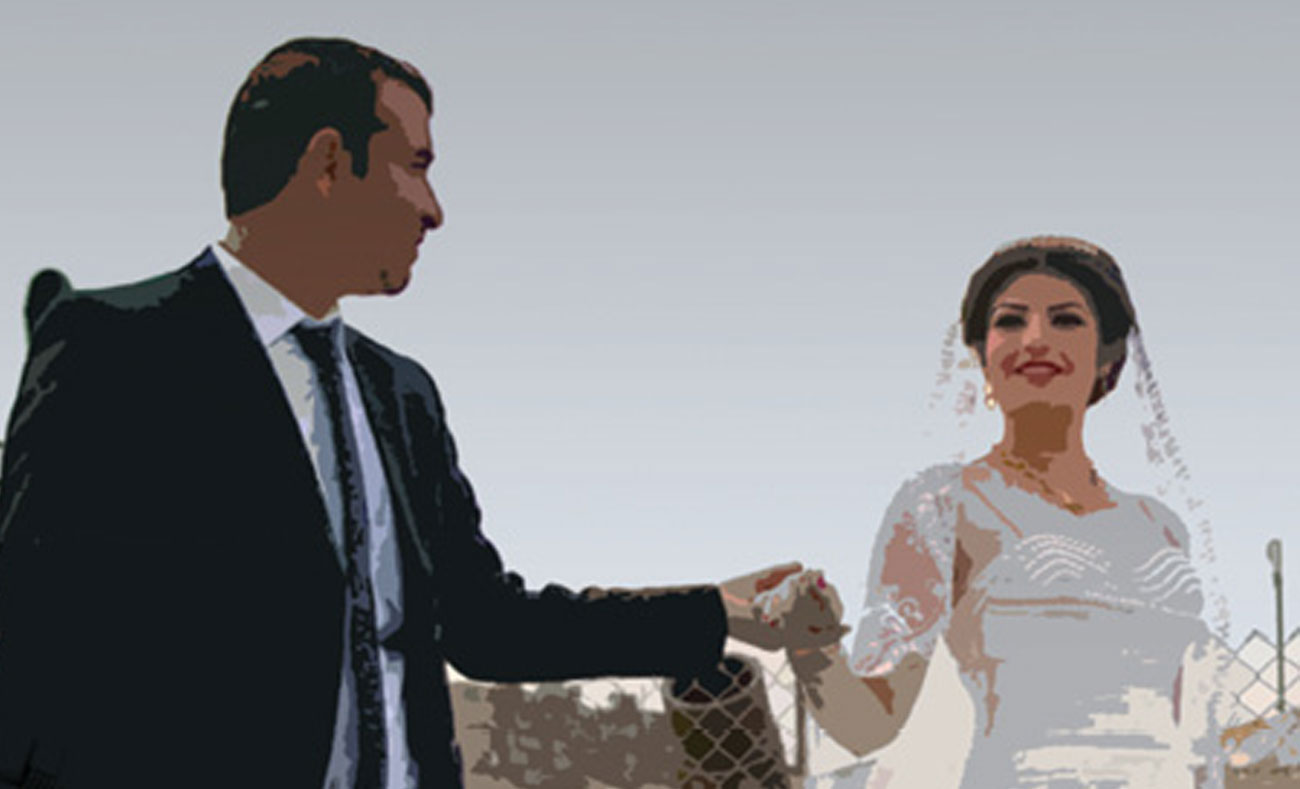






 A
A
A
A
A
A

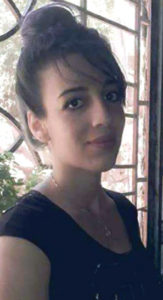
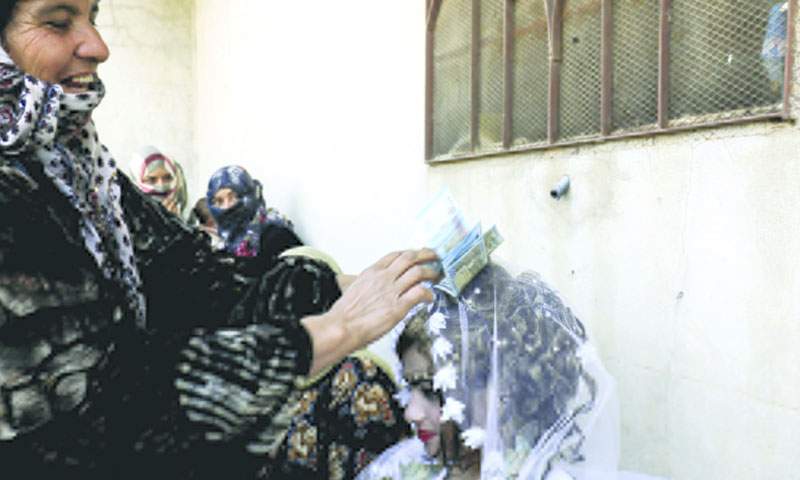
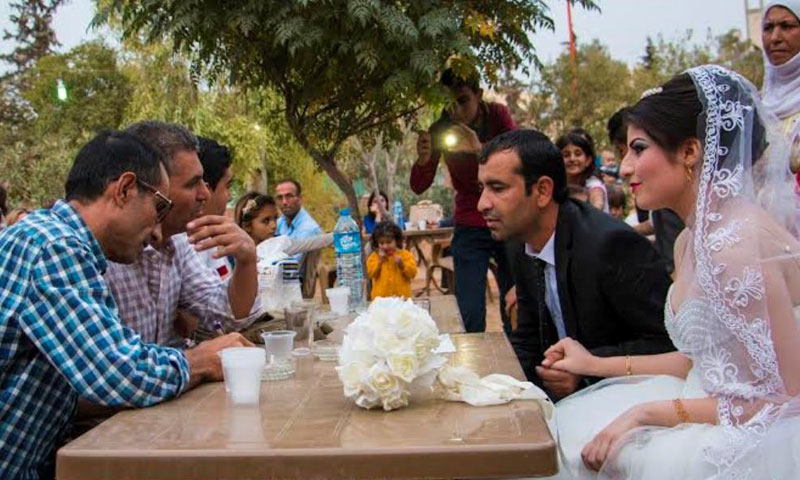



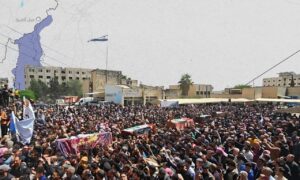



 More In-Depth
More In-Depth